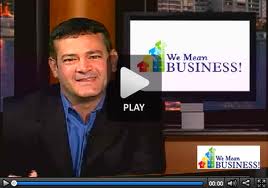Which came first, the happy customer or the happy employee?
Recently, a returning client asked if I would deliver a one-hour presentation for his trade association. With further discussion, I learned that his group wanted its hired speaker to show attendees: “How to Motivate Employees During These Tough Economic Times.”
This got me thinking about the not-so-obvious parallels that exist between employees and customers …
The smartest companies know that employees are the lifeblood of their organizations. Culture is everything. Your people help to make up your company; your brand. They’re the ones who deliver the customer experience.
“Whether you are big or small, you cannot give good customer service if your employees don’t feel good about coming to work.” -Martin Oliver
The customer experience will never exceed the employee experience
Some 20 years ago I worked for a global restaurant chain. That experience got me more interested in hospitality and customer service. That employer operated on a principle that has stayed with me ever since: The guest experience will never exceed the employee experience. Every day I see evidence of the fundamental truth in that statement. Sure, a great employee might be able to deliver a great customer experience in spite of a less-that-ideal work culture, however, that situation isn’t sustainable. A poor employee experience can only wear on a worker’s attitude and negatively affect customer interactions. That employee will probably leave the organization before too long.
It should come as no surprise
So I set about to research employee satisfaction. I was looking for proof that “dollar” compensation is not one of the top factors in employee loyalty. Along the way I discovered an interesting correlation.
As it turns out, some of the best places to work are also known as industry leaders in customer service.
In the top 20 of Fortune magazine’s annual 100 Best Companies to Work For list, for example, you’ll find such firms as Google, Wegman’s Food Markets, Zappos.com and USAA.
That’s an interesting mix, isn’t it? A search engine, a brick-and-mortar grocery retailer, an online retailer and a call center serving insurance and financial needs.
Bottom line
Some might say poor customer service is a vicious circle: customers are angered by it, so they take it out on the employees. Others would blame hostile, demanding clients who cause frazzled employees to behave badly.
Consider this: Giving employees an opportunity to engineer a positive customer experience by way of autonomy, mastery and purpose might just be the magic pill you’ve been looking for.
I accepted that offer to teach a group of executives how to motivate employees and – between you and me – what I discovered along the way was this:
- Our intrinsic motivators at work don’t suddenly change with a changing economy
- We’re much more alike than we are different
- The customer experience is in direct correlation to the employee experience:
Happy employees make happy customers who make happy employees who make happy customers who are more likely to become raving fans who generate 80 to 90 percent of your referral business. But here’s the part that may surprise you, mainly because no one is talking about it or connecting the dots:
Employees who are given the permission, the training, the ownership, and a consistent opportunity to make customers happy are less likely to leave your company. An experience-based organization fosters employee engagement by giving your employees a sense of purpose. In other words, a culture of great customer service magically produces employee loyalty. Go figure.



















